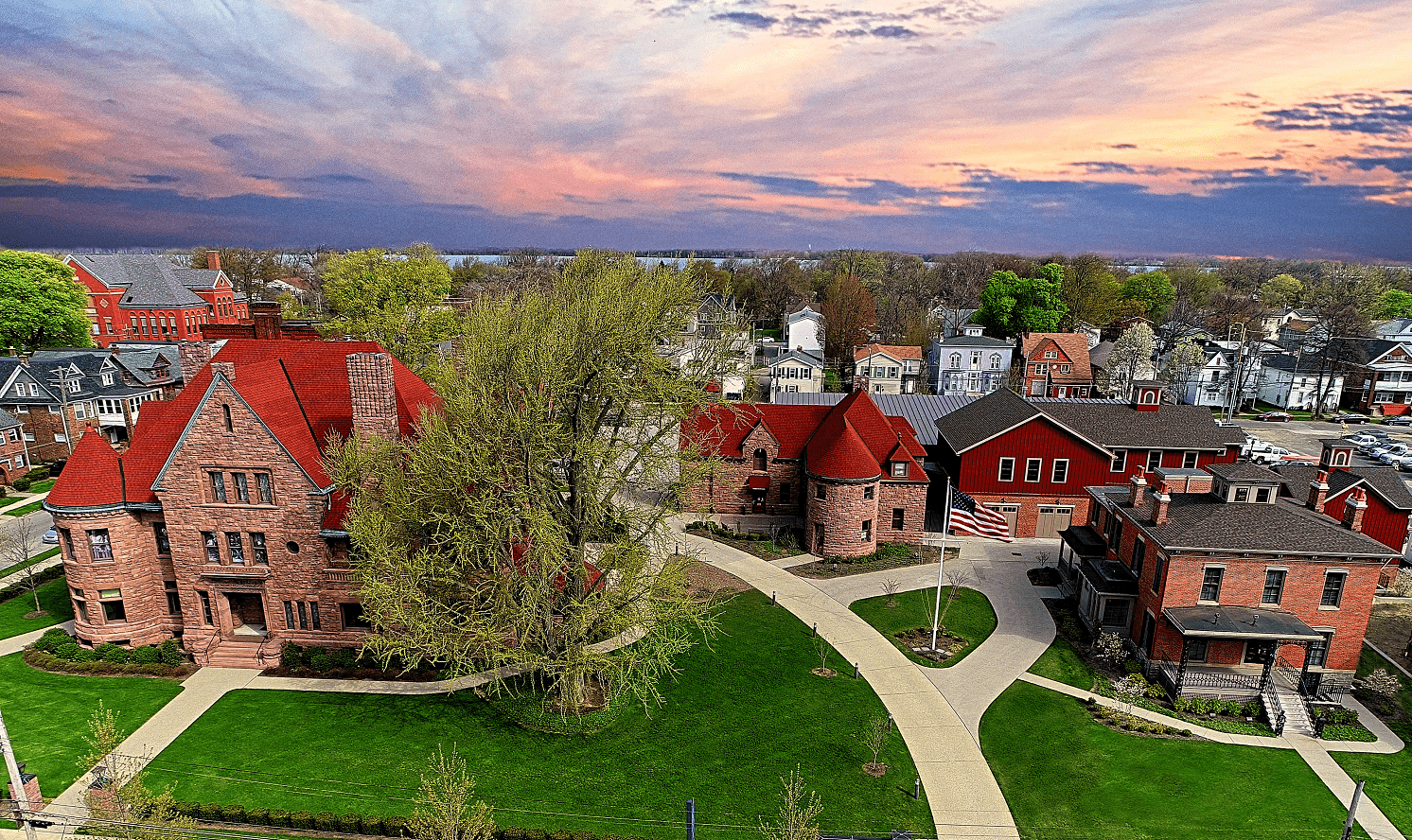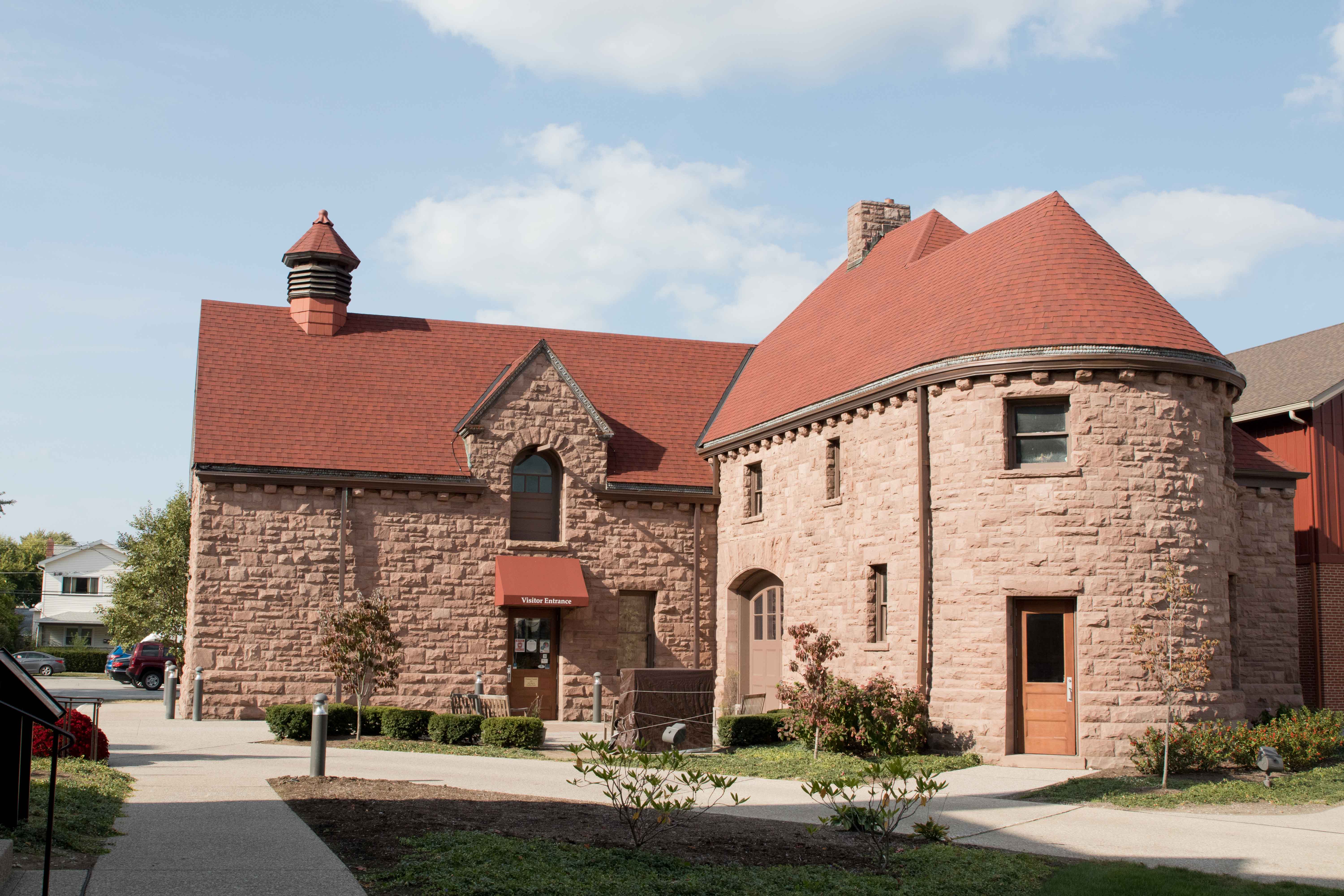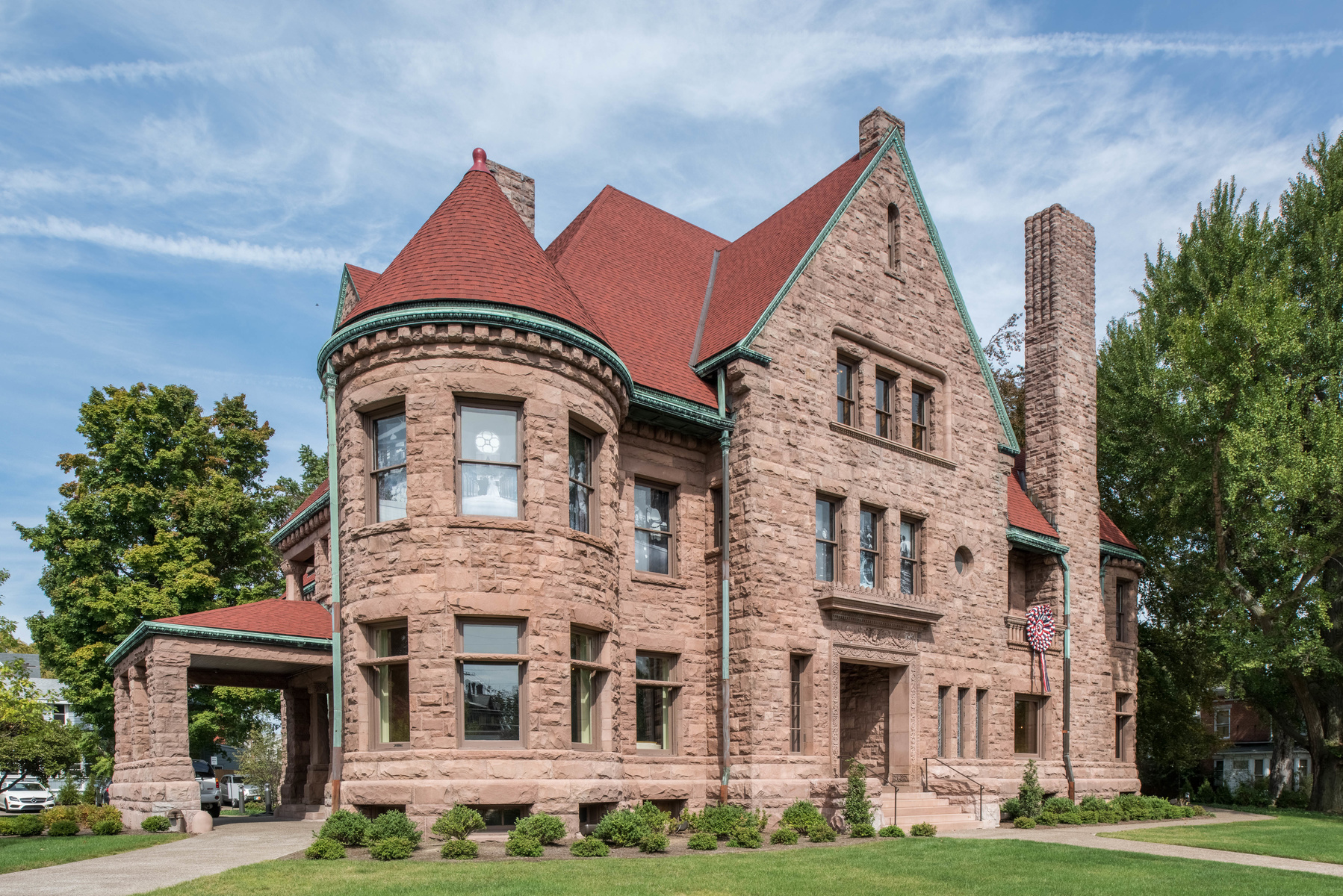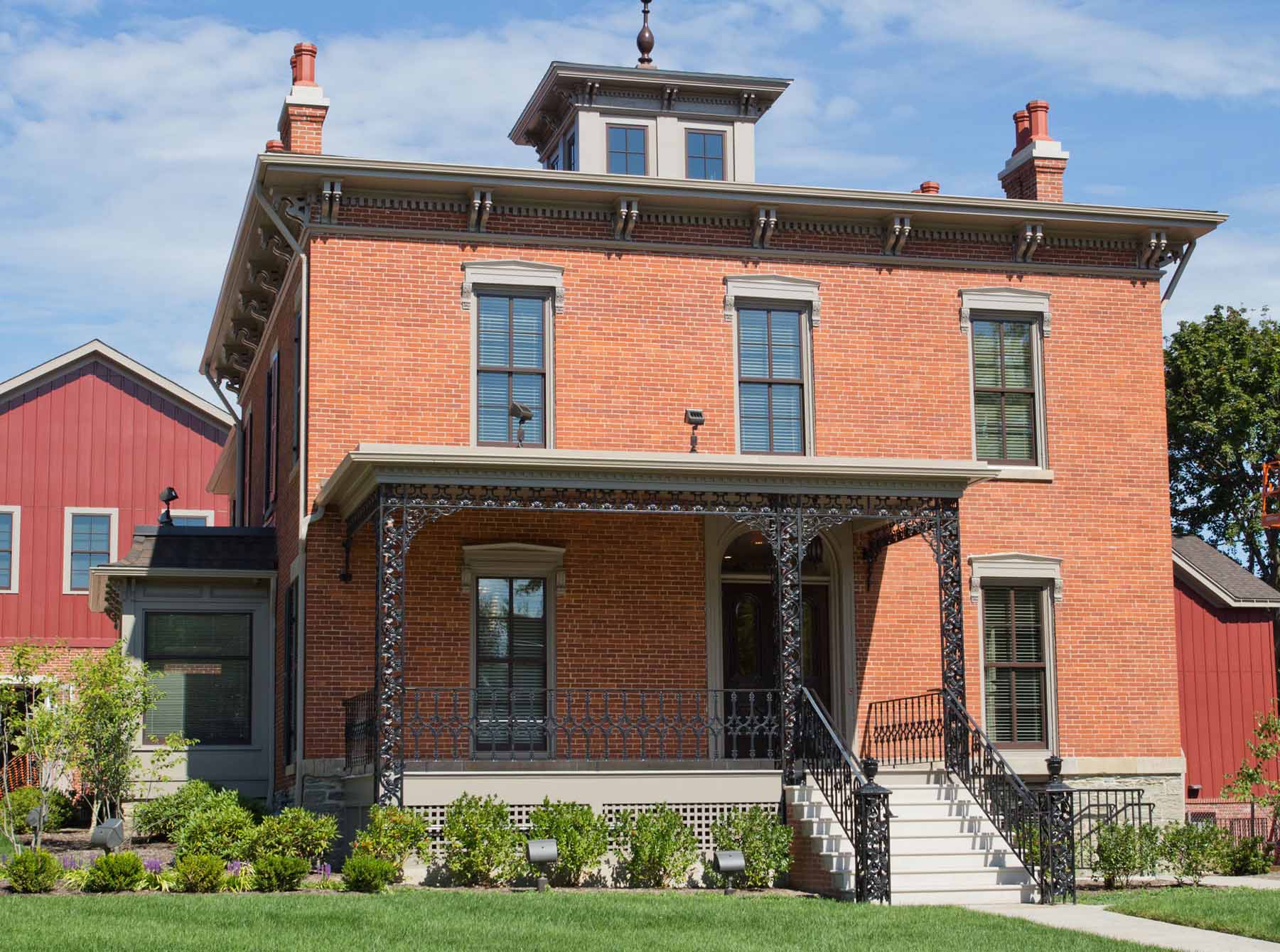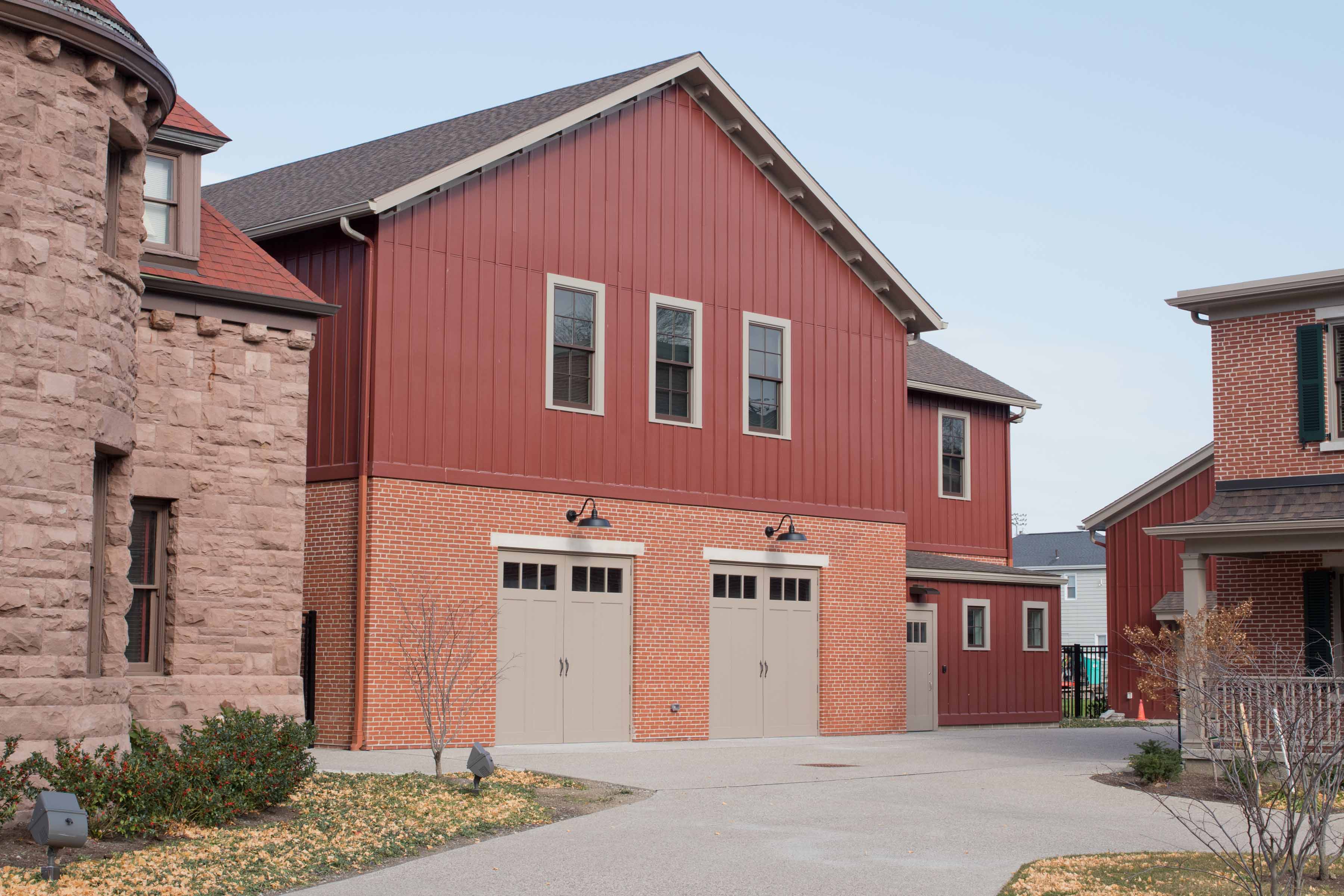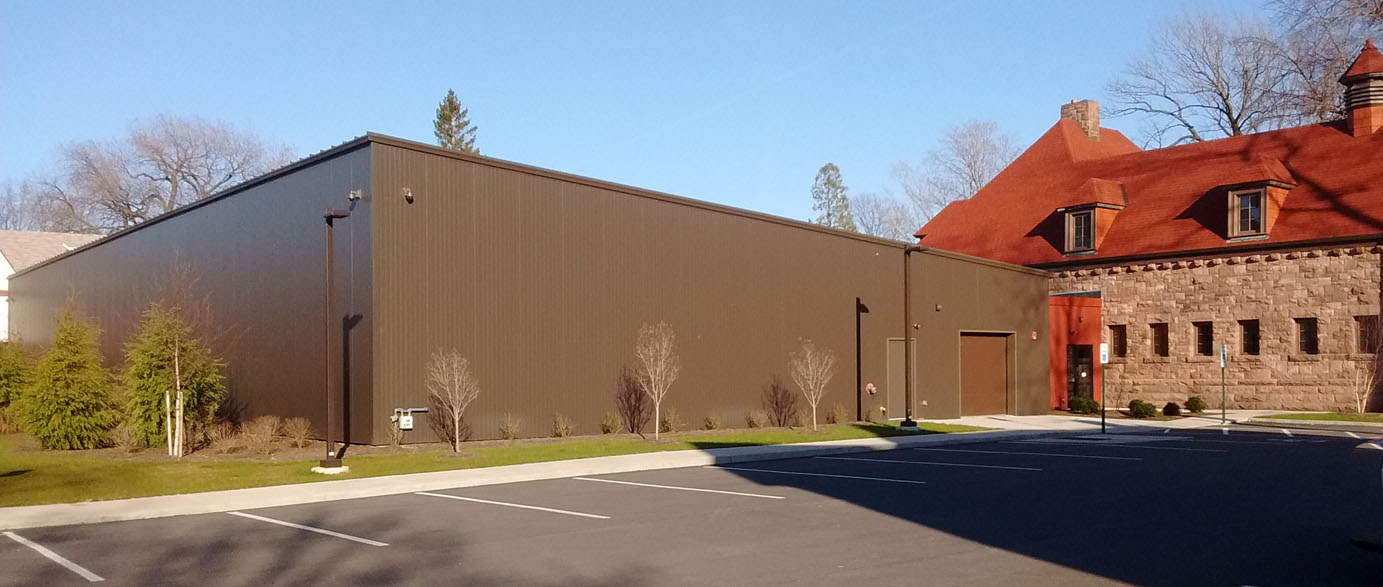Watson-Curtze Mansion
Built in 1891, the mansion features a Richardsonian Romanesque style and includes 24 rooms, filled with extraordinary architecture, stained-glass windows, mosaics,12 fireplaces, a ballroom and solarium.
Harrison F. Watson (1853-1904), a paper manufacturer, built the 15,000-square-foot house along with his wife Carrie. Their daughter, Winifred, married Eli Griswold, of Griswold Manufacturing.
After Carrie died, Frederic Felix Curtze (1858-1941), a bank president and industry leader, bought the home and lived there with his family until his death. The family included his wife Caroline Stohlman Curtze and two children, Louise M. and Frederick A.
After Mr. Curtze died, the family donated the home to the Erie School District, and it later became known as the Erie County Historical Society. It was added to the National Register of Historic Places in 1983.

